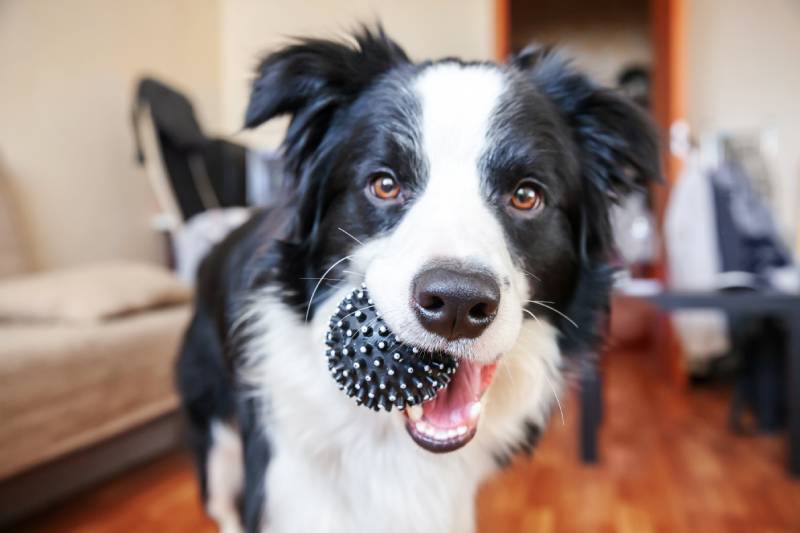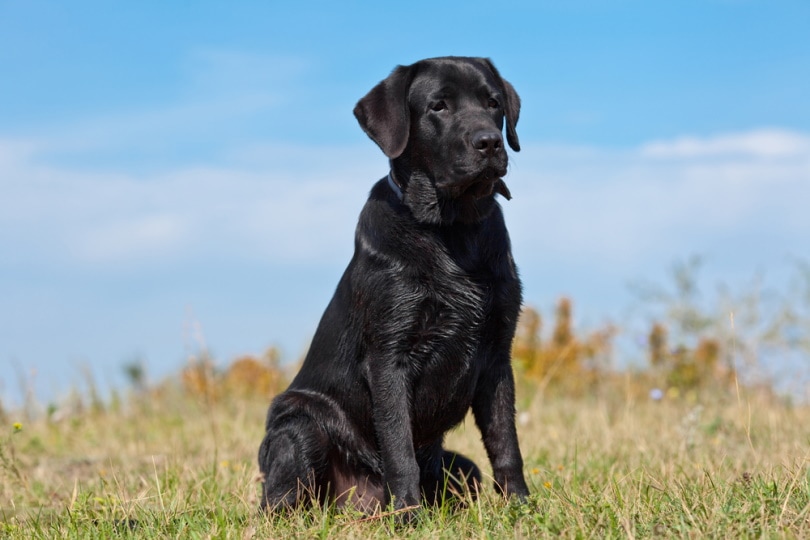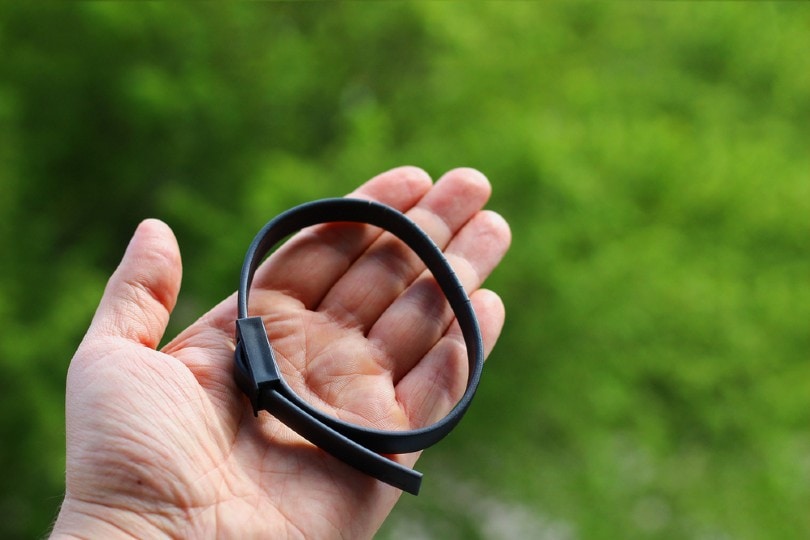Are Cane Corsos Good with Cats? Breed Temperament & Facts
Updated on
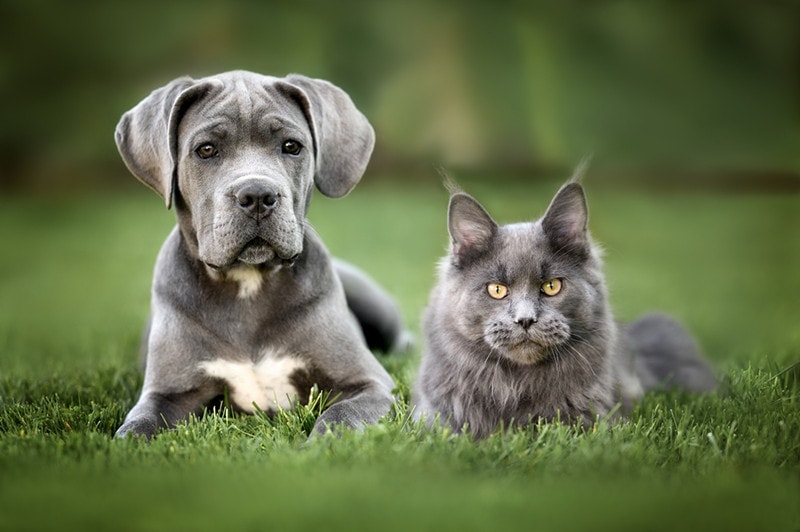
The Cane Corso is a large, powerful breed that is known for having a fierce protective nature and excelling as a guard dog. Officially recognized by the American Kennel Club in 2010, this breed has grown incredibly popular over the last decade as more and more families are interested in making them part of the family.
Those that love cats and dogs equally know the importance of having cat-friendly dogs to ensure a peaceful, happy home. The Cane Corso may come complete with an intimidating look and intense reputation, but they generally get along well with cats, especially if they are properly socialized from an early age.
Here, we’ll cover more about the breed’s overall temperament, how they are with cats, and even touch base on some tips for keeping your home as blissful as possible.
Cane Corso Temperament
The Cane Corso is a lovable and powerful dog that is very loyal and affectionate with its immediate family members. While they are often very friendly and gentle with the family, strangers and animals may be met with an entirely different welcome.
These dogs are incredibly willful and very protective of their loved ones. They have a serious nature to them, but they can also be a bit goofy and entertaining. Any perceived threats are often met with the intensity and fearlessness that gave them their formidable reputation.
These dogs are often very eager to please and pick up on training well. They have a long history as guardians and hard workers, so they require much more exercise and mental stimulation than most other mastiff breeds. A Cane Corso requires a firm, confident leader to properly train and socialize them.

Cane Corsos and Cats
Not all dogs will be good with cats, especially those with higher-than-average prey drives and a lack of socialization. As pet owners, we must ensure a harmonious environment where everyone gets along in the home, so caution must always be used with any cat and dog combo.
The Cane Corso has an exceptionally high prey drive and is incredibly powerful, making them a threat to our feline friends under the wrong circumstances. A Cane Corso that has been properly introduced and socialized with cats starting from a young age will often do very well living alongside cats.
On the other hand, if the dog was never raised around cats and has had little to no exposure to them or other small animals, this could cause their prey drive to kick in and make the combination dangerous. Each dog is an individual so it’s important for owners to be aware of how to handle introductions and understand the behaviors of both species.
Safety Tips for Homes with Cats and Dogs
Taking proper safety measures is essential to ensure everyone is happy, healthy, and getting along smoothly. Here are some important tips to keep in mind if your home is open to both cats and dogs.
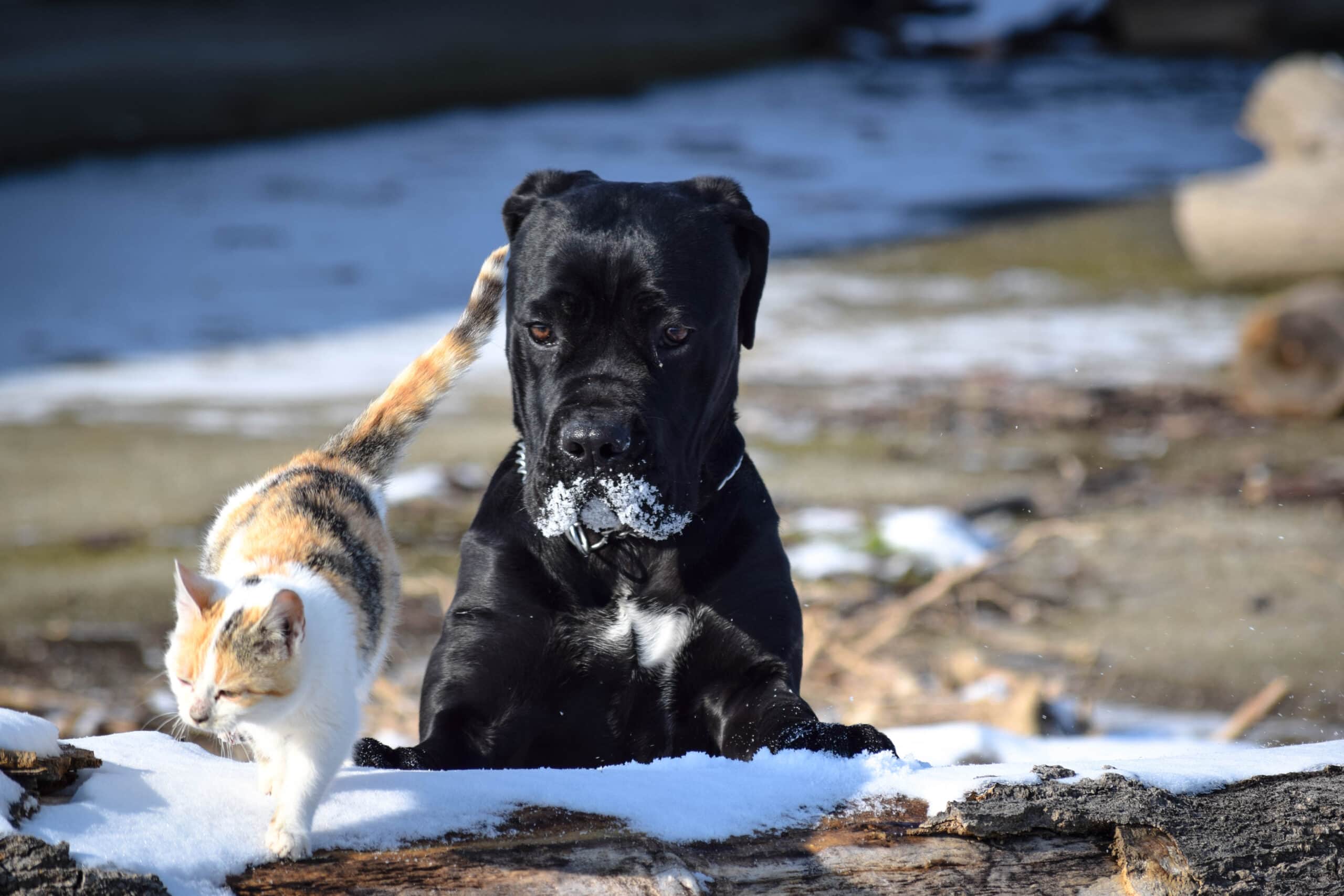
Puppies Should Be Properly Socialized
Proper socialization for any puppy, regardless of the breed, is very important to ensure they are as well-rounded and obedient as possible. Your Cane Corso puppy should be introduced to your cat as soon as possible with supervised, proper introduction techniques. If living alongside cats is normal from puppyhood, it’s likely your dog won’t have much trouble at all living alongside cats as it grows older.
Adult Dogs Should Always Be Cat Tested
If you already have cats and are considering bringing home an older Cane Corso, it’s best to have them cat tested before you ever commit to adding them to the family. Any reputable breeder or Cane Corso rescue should know the individual dog well enough to know the best type of home suited for them.
If you are adopting from a shelter, ask the staff to cat test the dog beforehand and consider fostering so that you can see how they do when introduced to your animals. Any dog that has shown cat aggression should never be paired with a household that has cats.
Proper Introduction Needs to Be Top Priority
Regardless of which animal was in your home first, you need to make sure proper introductions are your top priority when a pet enters the home. This process may require time and patience, or it may go very smoothly. This will be dependent on the animals in question. Don’t hesitate to reach out to your veterinarian or a professional trainer if you need help.
Household Cats and Strange Cats May Be Treated Differently
It’s important to remember that just because your Cane Corso gets along well with the cats in the house, doesn’t mean that a stray or unfamiliar cat won’t spark their natural prey drive. Always use caution around someone else’s pets or if you were to encounter any stray cats while out and about.
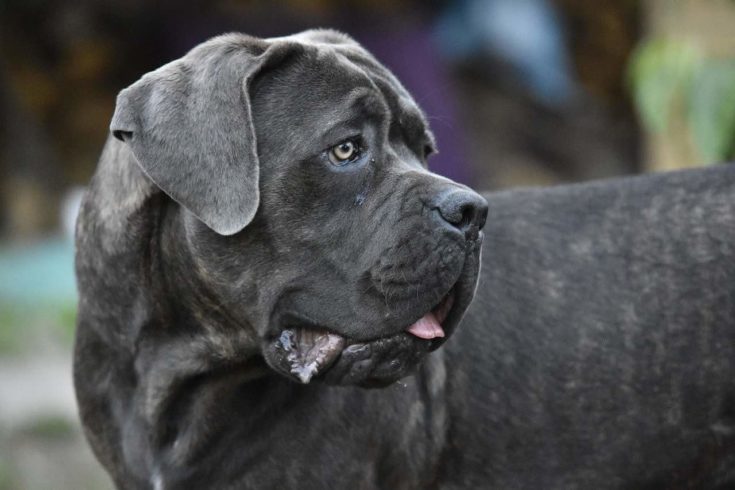
Feed Everyone at the Same Time but Separately
Feeding time can be a challenge when you have a household with more than one pet. Food aggression is a common problem among both cats and dogs, so it’s best to get ahead of this behavior when your pets are young. As a safety precaution, it’s always good to feed your animals at the same time but in separate areas to prevent any scuffles.
Set Aside Time for Each Animal
When you have multiple pets in the home, you should prioritize setting aside time for each one to prevent any jealousy and to ensure everyone is getting their social needs fulfilled. Bonding is incredibly important and some pets that feel deprived of attention may act out.
Monitor Interactions
It’s a good idea to monitor interactions between the dogs and cats in the house, especially if there are newer family members in the home. Cats will often go to great lengths to assert their dominance over dogs, even if they are as large and capable as the Cane Corso. This could be very dangerous if your cat lashes out and the dog defends itself. Cats should also be well-socialized with dogs and if their behavior is aggressive, it’s extra important to be wary of interactions between the two.
Ways to Identify Cat Aggression
Understanding a Cane Corso’s behavior is not only a very important part of the training process but is also an important part of dog ownership as a whole. Dogs will exhibit certain behaviors, though sometimes subtle, that are cat aggressive.
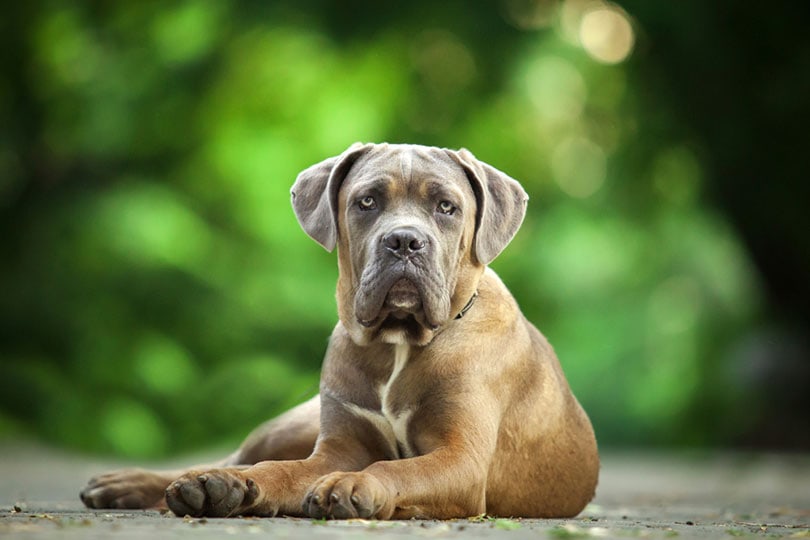
Rigidness / Stillness
A telltale sign of cat aggression is rigid posture and stillness. This signal is very easy to miss but this type of body language is associated with prey drive and potential aggression.
Intense Staring
Not only will your dog freeze in place and become rigidly still but it will also stare intensely at its target.
Visual Tracking
Once the dog locks in a stare, it will also visually track every movement the cat makes.
Tail Position
When your dog’s tail goes up, this is an indicator of aggression. This can signify that they’re about to react to whatever it is they’re unhappy with or have their sights set on.
Raised Hackles
Raised hackles on a dog mean they are on high alert. This response can have different root causes such as fear, dominance, territorial behavior, and more. Not all dogs that are cat aggressive will raise their hackles, and this can even be difficult to notice on short-haired breeds like the Cane Corso.
Barking/Whining
Some dogs will bark and whine when they see a cat or have heard one nearby. Barking and whining are indicators of excitement and can very well be a prey-drive response to honing in on their target.
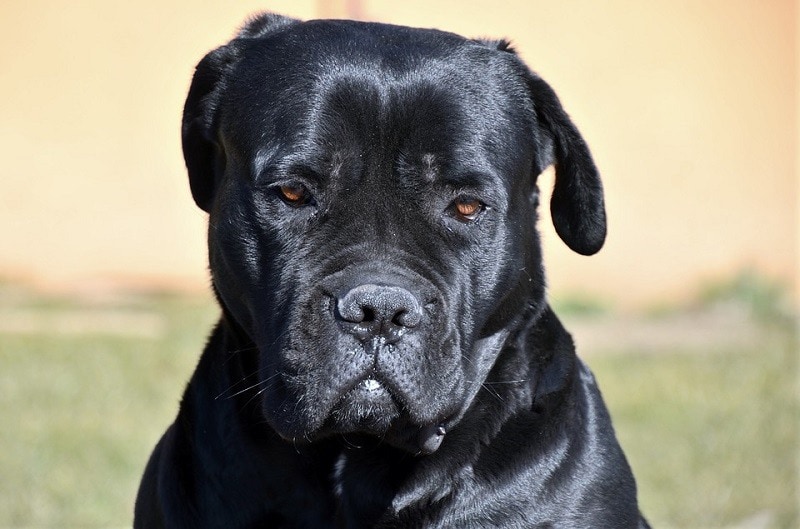
Low Growling
Dogs may low growl for many reasons, one of them being aggression. If your dog is low growling in the presence of your cat it could be a warning before they take the next step.
Baring Teeth / Snarling
One of the most obvious signs a dog is behaving aggressively is when they bare their teeth. This is also a warning that comes about when the dog is feeling upset or threatened. It is also common for dogs to do when asserting dominance.
Lunging / Biting
Lunging is one of the final warning signs a dog will give before a bite or a full-blown attack. Dogs often lunge in aggression as a result of fear, dominance, or possessiveness over something like food or a toy. Bites may vary in severity from a small nip to a serious attack. Cats are very fragile and can easily be injured or killed by a dog bite, especially coming from a Cane Corso.
Chasing
Chasing is associated with a high prey drive, so if your dog enjoys chasing cats you need to be very cautious. Occasionally dogs may play chase the cats and vice versa, so it’s important to keep an eye out for other indicators that point to a prey-driven chase.
Final Thoughts
The Cane Corso may be an intense breed with a relatively high prey drive, but if they are properly trained and socialized with cats they often get along very well. Adult dogs that have never been exposed to cats often have a higher likelihood of cat aggression or a higher overall prey drive, but this will be dependent on the individual and the level of training they’ve had. Always use caution when introducing any dogs and cats and be sure to implement safety measures in the household.
Featured Image Credit: otsphoto, Shutterstock




